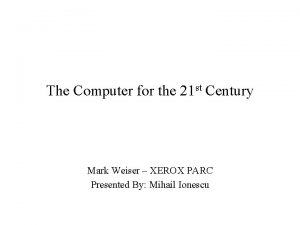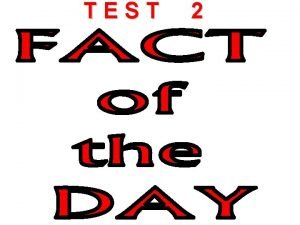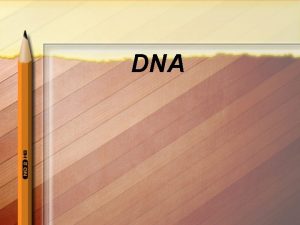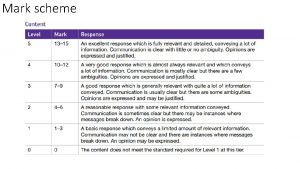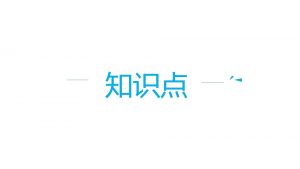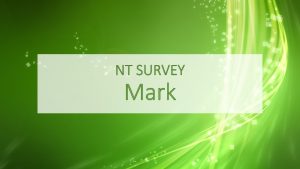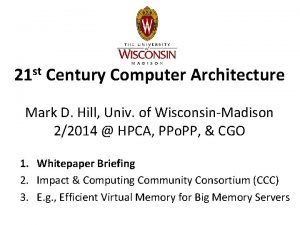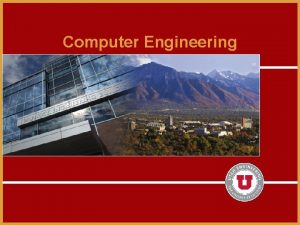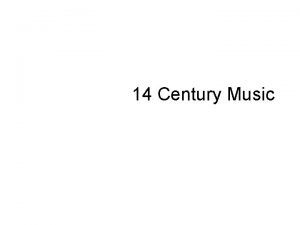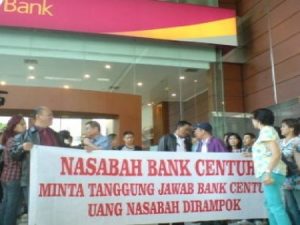The Computer for the 21 st Century Mark














- Slides: 14

The Computer for the 21 st Century Mark Weiser – XEROX PARC Presented By: Mihail Ionescu

Outline • Brief presentation of the paper • What happened in these 10 years in this domain since the paper was published • Conclusions

Motivation • The best technologies are those that disappear. • Writing is the best example it is almost invisible for us in the sense that it is used almost without realizing it. • Possessing the most powerful computer is like having just one book, does not matter how big it is. • Also, the computer screen demands full attention.

Contributions • Not real technical contributions, since it is not a technical paper. • One of the first (if not The first) papers that try argue for the need that the silicon technology should “vanish in the background”. • Some real life scenarios of using this paradigm. • Identity the technical requirements of an infrastructure for supporting the ubiquitous computing.

Ubiquitous Computing • The computers will be everywhere: pens, cans, pads, boards, coffee machines, alarm watches, etc. • Some of the devices (like traffic lights, ovens, etc. ) already have computers incorporated, but without the possibility of communicating between each other, which is very important. • At least hundreds of components in each room. • Electronic badges are already in use (I think). • Current prototypes to build pads, tabs.

Technical Requirements • Three main parts – Cheap, low-power computers that include convenient displays – A network to tie them together – Software systems to implement ubiquitous applications

Low-power Computers • The first requirement is not so difficult to be met • Even at the time when the paper was written such devices existed • Today there are such devices with processors of 200 MHz (maybe more), RAM of 128 M and even color displays • The devices should be simple, no AI or other complex technologies

Network • Data transmission rates for both wired and wireless networks are increasing. • The current systems cannot (and will not) support hundreds of machines per room. • Three types of network connections: tiny range wireless, long range wireless and very high speed wired it is a need of a single kind of network connection that somehow serve all three functions.

Applications • New operating system idea that does not assume a relatively fixed configuration of hardware and software. • New systems that have to deal with the diversity of inputs from the user.

What Happened in 10 Years • Almost nothing that was described in the paper (even if Weiser predicted 20 years). • The devices are here, maybe more powerful that Weiser imagined. • However, the network does not exist in the generality imagined by Weiser. • Many of the devices contain computers, but the computers do not communicate in a “ubiquitous” way.

Why? • I think that mainly because what Weiser suggested is not practical nor possible. • The second requirement (the network part) is much more complex than initially thought.

Technical Problems • It is not clear whether this network will be based on the current Internet infrastructure (IP based), or it will require a new, completely different approaches. • Even much smaller ad-hoc networks could not use IP as the based protocol new protocols like Blue Tooth, etc. • New schemes of routing: content based, smart messages, etc.

Other Problems • Security would become a nightmare. The idea that cryptographic techniques will solve this problem is a joke. • Flexibility.

Conclusions • A good starting paper, that tries to present what ubiquitous computing is and how it can be used. • However, the paper suggests more that this idea is not practical and extremely difficult to implement in a robust manner. • Low power computers exist and will be used in a lot of devices, but not in a global network. • Some much narrow projects might benefit from low power computers communicating between each other, like sensor networks.
 Mark weiser the computer for the 21st century
Mark weiser the computer for the 21st century Horace taylor the verdict september 25 1899
Horace taylor the verdict september 25 1899 Fspos
Fspos Typiska novell drag
Typiska novell drag Nationell inriktning för artificiell intelligens
Nationell inriktning för artificiell intelligens Returpilarna
Returpilarna Varför kallas perioden 1918-1939 för mellankrigstiden
Varför kallas perioden 1918-1939 för mellankrigstiden En lathund för arbete med kontinuitetshantering
En lathund för arbete med kontinuitetshantering Underlag för särskild löneskatt på pensionskostnader
Underlag för särskild löneskatt på pensionskostnader Personlig tidbok för yrkesförare
Personlig tidbok för yrkesförare Sura för anatom
Sura för anatom Densitet vatten
Densitet vatten Datorkunskap för nybörjare
Datorkunskap för nybörjare Stig kerman
Stig kerman Tes debattartikel
Tes debattartikel
